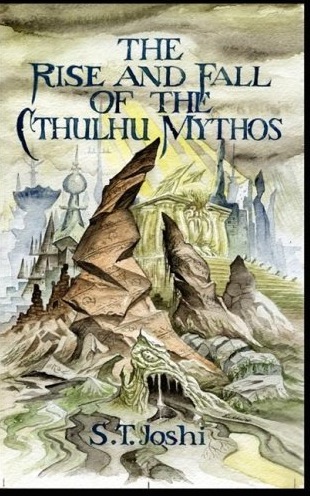Derleth Be Not Proud: S. T. Joshi’s The Rise and Fall of the Cthulhu Mythos,
Wednesday, February 11, 2009
posted by Steve Tompkins
 Print This Post
Print This Post
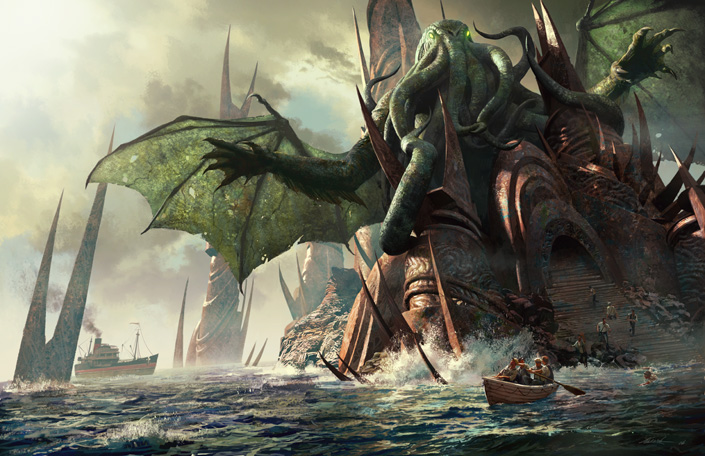
Part One: Hypersensitive, Not Hyperborean
Part Two: Cry ‘Havoc!’ and Let Slip the Hounds of Tindalos
Part Three: Autochthonic Masses Howling and Wet-Mouthed
He tried to struggle through Lovecraft pastiches, but at the first painfully serious reference to the Elder Gods, he felt some important part of him going numb inside, the way a foot or hand will go to sleep when the circulation is cut off. He feared the part of him being numbed was his soul.
Joe Hill, “Best New Horror”
The Disciples of Cthulhu. The Quest for Cthulhu. New Tales of the Cthulhu Mythos. Cthulhu 2000. In His House at the Federalist Society, Dead Chthulhu Waits Dreaming. The Children of Cthulhu. Cthulhu’s Heirs. Fall of Cthulhu Volume I: The Fugue. Acolytes of Cthulhu. High Seas Cthulhu. Frontier Cthulhu. Cthulhu’s Dark Cults. Age of Cthulhu: Death in Luxur. Hardboiled Cthulhu. The Strange Sound of Cthulhu. Cthulhu Has Two Mommies. Eldritch Blue: Love and Sex in the Cthulhu Mythos. Song of Cthulhu. The Spiraling Worm: Man Versus the Cthulhu Mythos. Gumshoe Trail of Cthulhu. Cthulhu on a Hot Tin Roof. Cthulhu Fhtagn, Baby! And Other Cosmic Insolence. The Conquering Sword of Cthulhu. Our Mutual Cthulhu. The Cthulhu Also Rises. Bright Lights, Big Cthulhu. And that list is limited to books that give the most Cosmic of Cephalopods star billing, a titular mention! The most merciful thing in the world, I think, is the inability of the human mind to correlate all the contents of today’s Mythos.
Thirty years after August Derleth was driven to conclude, while introducing Tales of the Cthulhu Mythos, that “Certainly the Mythos as an inspiration for new fiction is hardly likely to afford readers with enough that is new and sufficiently different in concept and execution to create a continuing and growing demand,” M. le comte’s “new and sufficiently different” desiderata have been more honor’d in the breach than the observance, yet we’re clearly dealing with a recession-proof industry. No doubt a bit of cooling-off has occurred since the irrational exuberance of the Nineties, when the fellahin flocked to Robert M. Price and wild beasts licked his hands, but if we recall Lovecraft’s “The Whisperer in Darkness” and a disclosure by Henry Akeley to Albert Wilmarth — “They could easily conquer the earth, but have not tried so far because they have not needed to. They would rather leave things as they are to save bother” — some of us might be tempted to interject “Save bother, hell! They’re sitting on their pseudopods because there’s money to be made!”

Who, then, can guide us through the pandaemonic cachinnation? Who can re-hoist the fallen and, let’s face it, somewhat erratically-sewn standard of Lin Carter’s 1972 Lovecraft: A Look Behind the Cthulhu Mythos? But soft, what voice through yonder guttural chanting breaks? Let’s listen:
The great majority of Cthulhu Mythos pastichists have nothing to say, and one wishes they would acknowledge the fact by actually saying (or writing) nothing.
Ah, yes. The de haut en bas tone, the Damoclean disdain overhead like some orbiting satellite’s death ray, the surety that the speaker can if he chooses (and does he ever) reduce the likes of Brian Lumley to so much Shoggoth-tripe. This can only be S. T. Joshi, the best thing to happen to H. P. Lovecraft since Lord Cornwallis’ victory at Yorktown. The Rise and Fall of the Cthulhu Mythos was actually published (by David Wynn’s Mythos Books, LLC in Poplar Bluff, Missouri) last fall, but belt-if-not-noose-tightening realities delayed my scrounging up a copy by months.
Joshi of late has seemed to be after bigger game than even Cthulhu for his trophy-room with Atheism: A Reader, God’s Defenders: What They Believe and Why They Are Wrong, H. L. Mencken on Religion and the Twain-culling What Is Man? And Other Irreverent Essays. Even within his earlier bailiwick, for this reader The Modern Weird Tale (2001) and The Evolution of the Weird Tale (2004) seemed to consist of archipelagos of insight in shoreless seas of subjectivity. Rise and Fall is better –in fact, like Ramsey Campbell and Modern Horror Fiction (2001), it’s Joshi at his best. If we hark back to something he wrote in H. P. Lovecraft: The Decline of the West — “In the end, criticism is nothing but the confrontation of one mind with another, and neither side is free of error” –the new book succeeds in being engagingly rather than enragingly confrontational.
At 308 pages Rise and Fall is far from interminable, but endlessly entertaining, as was the much less rigorous and research-reinforced Lovecraft: A Look Behind the Cthulhu Mythos in its day (Carter’s effort retains a certain cack-handed charm absent from his “look behind” The Lord of the Rings). Joshi hints that he is on to himself, aware of the reputation that now stalks him like Clark Ashton Smith’s Double Shadow. He begins his epilogue with this admission: “It should be evident by now that the somewhat supercilious title of this book does not accurately reflect my understanding of the progression of the Lovecraft (or even the Cthulhu) Mythos from 1917 to the present day.” At the other end of the book he allows Stanley C. Sargent his day in court, quoting that weird fictionist to the effect that “the very scholars who have gone to such lengths to ensure Lovecraft receives the literary recognition he deserves tend to dismiss all or nearly all contemporary attempts to continue Lovecraft’s legacy.” When the time comes to consider Sargent’s work (1999’s Ancient Exhumations and 2002’s The Taint of Lovecraft), he singles out “The Black Brat of Dunwich” as “a genuine and unalloyed triumph,” and “Their Love of Craft” as “extraordinarily clever.”
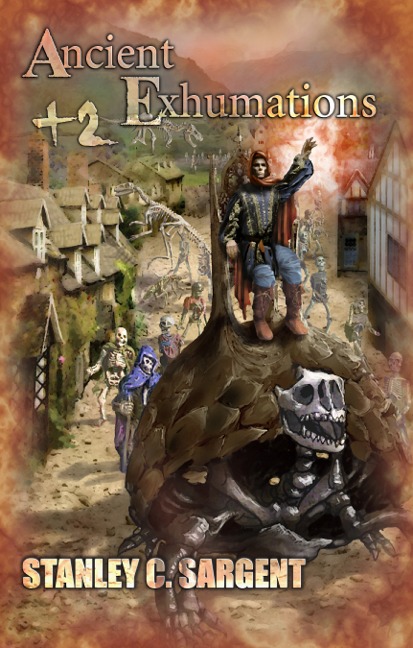
Robert M. Price serves as the Washington Generals to Joshi’s Harlem Globetrotters throughout Rise and Fall: “I believe, however, that for all the valuable work he has done in illuminating numerous facets of the Mythos from his perspective as a New Testament scholar, much of Price’s defence of Derleth is unconvincing, and is largely the product of his personal fondness for the Mythos in all its forms irrespective of the aesthetic merits of the material in question.” Yet Joshi is also mindful of what Price had to say in his introduction to The Xothic Legend Cycle (1997): “If [Lin Carter’s] tales were exactly like Lovecraft’s stories, they would be Lovecraft’s stories, which, one senses, is what some critics really want. They would like all Lovecraftian fiction besides Lovecraft’s to be reduced to nullity; they wish anyone else never to have written.” Rise and Fall exonerates its author from being an unmitigated Ultimate Nullifier; here we catch him proffering olive branches as well as chastising with thornbrush switches.
Case in point: an observation that “The Mythos influence extends to poetry, as seen in such works as Lin Carter’s creditable Dreams from R’lyeh (1971).” And what of the author whose every bestseller has affronted Joshi the way Lovecraftian geometry might Euclid? Yes, he responds zingerishly to Charles Hoffman’s contention that “The Dunwich Horror” has “tremendous popular appeal” and “accessibility” going for it: “. . .a dubious compliment indeed. Stephen King’s work is certainly accessible, but that in itself does not confer any aesthetic value upon it; indeed, rather the reverse.” Sure sounds like the critic we remember from Necrofile and The Modern Weird Tale, he who would crawl across five miles of broken glass, birthday-suited and having swallowed a fistful of anticoagulants, while being hunted by Predator drones with Hellfire missiles, just to take another shot at King, but evidence elsewhere in Rise and Fall suggests that he’s been doing more than heckling the screen during private screenings of Maximum Overdrive for himself and Harold Bloom: King’s “Jerusalem’s Lot” is “a competent enough tale,” even if the story “prones no deeper issues and is not executed with notable skill.” What’s more, “On the whole, The Dark Half is one of King’s more successful novels, and its subtle but emphatic Lovecraftian undercurrent adds to its effectiveness.” Still, the No Justice for Stephen King, No Peace Committee in my head broke out the picket signs upon reading this:
But beginning with “The Terrible Old Man” (1920), an entire array of imaginary New England cities — Arkham, Kingsport, Dunwich, Innsmoth — and accompanying topographic landmarks such as the Miskatonic River begin to be developed, with each successive tale building upon its predecessor and resulting in a richly complex fictional geography analogous to, say, Thomas Hardy’s Wessex or William Faulkner’s Yoknapatawpha County.
And when Joshi reaches William Pugmire’s Sesqua Valley stories, he approvingly writes “Pugmire’s numerous tales of this vale of deep woods and supernatural forces manage to build it up into a strange reality analogous to Lovecraft’s New England topography or the Severn Valley locale of Ramsey Campbell’s stories.” Okay, so what about King’s lovingly populated and even more lovingly depopulated Maine towns like ‘Salem’s Lot, Haven, and Castle Rock, the feeding place that is the city of Derry, and his galley of sullen or suds-sodden Down East isolates?
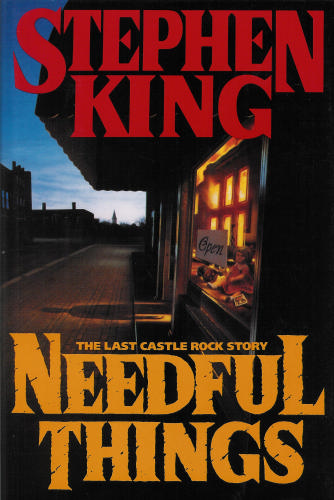
The Rise and Fall of the Cthulhu Mythos is much more generous to an author who wrote much less than King; on page 233, we find among those “attempting to draw upon the genuine sources of horror in Lovecraft’s own work” none other than “veteran weirdist Karl Edward Wagner (1945-1994), whose devotion to the sword-and-sorcery work of Robert E. Howard and Fritz Leiber is well known” (Not as well known as some of us would prefer, actually). Joshi then summarizes a standout KEW story before continuing
This recounting of the plot of “Sticks” cannot begin to convey the extraordinary skill in its execution. After a time the omnipresence of the stick-lattice figures (something Lee Brown Coye actually used in his Lovecraft illustrations) becomes oppressive and hideous, and the tale is a masterwork of slowly cumulative horror. In the end, the story perhaps has no broader message to convey, and to that extent it can be considered nothing but a clever horror tale, but as such it ranks high, both in the canon of modern supernatural fiction and in the very slim canon of competent Lovecraft pastiches.
Here at Cimmerian Central we worry much more about the “longevity” of Wagner’s literary afterlife than we do (nowadays) about Howard’s, so Joshi’s tapping of “Sticks” as canon-fodder is reassuring. Zap the Kane character with Robert Jordan’s balefire so that he was never chronicled or even created, and Wagner would still be a guest of honor in any consideration of the Robert W. Chambers/King in Yellow legacy (“River of Night’s Dreaming” and the Arthur Machen legacy (“.220 Swift”.
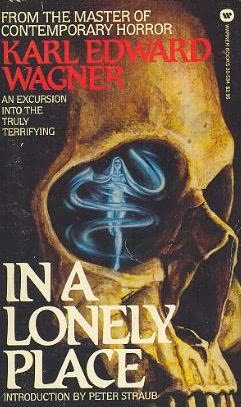
The Rise and Fall of the Cthulhu Mythos is painfully funny for pages on end, as when Joshi mentions “Dreams of Yith,” a 1934 sonnet-cycle by Duane W. Rimel: “Rimel’s own title was ‘Dreams of Yid’: in his naivete he apparently did not know that ‘Yid’ was an opprobrious term for a Jew.” Brian Lumley’s ears must be not so much burning as feeling like they’ve been napalmed: “It is difficult to describe, short of profanity, the extreme incompetence of Beneath the Moors.”
Joshi is particularly biting about the star-stone, that lapillus ex machina on which August Derleth over-relied the way the Burroughs epigones did on airboats in their sword-and-planet efforts. Weeks later my days continue to be brightened by the newly acquired knowledge that in “Something from Out There” (WT, January 1951), one of the star-stones has been personally inscribed by St. Augustine! I’m reminded of Crucifictorious, the name the Landry Clark character on Friday Night Lights comes up with for his “Christian speed metal” group; an earlier Crucifictorian intrusion into Mythos-matters occurs in Manly Wade Wellman’s “The Terrible Parchment” (WT, August 1937):
[A protagonist] stumbles upon the Necronomicon — but then destroys it with holy water. Did Wellman know that Lovecraft was an atheist who would have been appalled (or, perhaps more likely, amused at this bit of religious conventionality? It is impossible to know, but Wellman’s story deserves nothing but oblivion.
Or perhaps a present-day sequel in which the holy water is hissingly vaporized into sanctified steam upon first contact with the Necronomicon, and a voice, that of the Reverend Price’s introduction to this new Chaosium edition, says “Thanks, I needed that.” Some disputatious readers might be tempted to bring up a scene in “Dreams in the Witch House” at this juncture, and Joshi admits that “Keziah Mason, a reputed witch of the seventeenth century who has stumbled upon the secret of traversing through space and time, is frightened by the conventional appearance of a crucifix that Walter Gilman thrusts into her face.” But he has an essayist for The Barbaric Triumph, REHupan, namecheckee as far back as KEW’s Legion from the Shadows, and CAS-text-purifying editor waiting in the wings to deflect any accusation of Crucifictorianism on HPL’s part:
Scott Connors, however, has recently suggested to me that this incident might be explained by appealing to the fact that Keziah herself appears to subscribe to conventional views as to the powers of witches, so that her frightening crucifix could be psychologically plausible.
Almost as risible as editing Alhazred with holy water is the introduction by Basil Copper, in his The Great White Space (1974), of a blasphemous tome entitled The Ethics of Ygor? (My, well, hunch is that Ygor stoops to many crimes. . .)
Later this week the second part of this article will examine the book as a whole. But first, Howardists will find enough food for thought to buckle a banquet-board’s legs. When Joshi writes “. . .it is unfortunate that the more conventional — and less meritorious — of Lovecraft’s tales from ‘The Dunwich Horror” to “The Dreams in the Witch House” to ‘The Thing on the Doorstep” were the ones that most succeeding writers of the Cthulhu Mythos drew upon for their own work. Had they chosen Lovecraft’s better work to imitate, the Cthulhu Mythos might not be quite the travesty of Lovecraft’s vision that it is,” anyone conversant with the secondary sources on REH will flash back to Don Herron’s 1984 essay “The Dark Barbarian”:
. . .in most instances they have chosen to follow the least of Howard; this accounts for the general disregard in which most critics and many readers hold the Sword-and-Sorcery tale. Instead of finding work deriving from “Beyond the Black River,” you find most imitations traceable to such lame Conan adventures as “The Slithering Shadow.”
(Actually de Camp and Carter derived the final story in the 1978 collection Conan the Swordsman from, yes, “Beyond the Black River”; but such was the abject failure of “Moon of Blood” as a direct sequel that Don did right to ignore it)
And only a self-blinded earth-gazing Lancer-loyalist could fail to be struck by the parallels upon reading a reminder like this:
It is, however, symptomatic that the so-called Arkham Edition of the Works of H. P. Lovecraft, published in eleven volumes by Beagle/Ballantine in 1969-71 included only four volumes consisting entirely of Lovecraft’s own work. One volume consisted of selected “revisions,” two other volumes were filled with the Derleth “posthumous collaborations,” two more with Derleth’s Tales of the Cthulhu Mythos, and — most egregiously — two others reprinted Derleth’s Mask of Cthulhu and Trail of Cthulhu.
Purists of a certain age were taught patience in a hard school, so is not the impatience they occasionally show with nostalgists who wish REH/HPL publishing had remained trapped in Nixon-era amber entirely understandable?
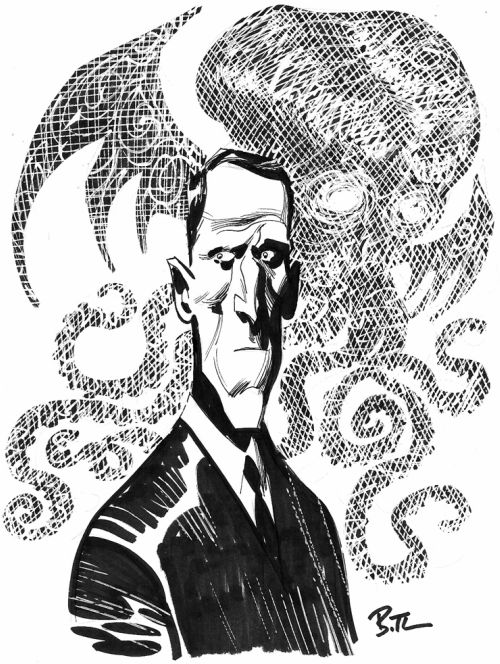
As we’ve previously noted both at this blog and in TC-the-print-journal, Joshi’s history with Howard’s work (and Howard’s fans) is one of confusions and contusions: return with us now to those glorious days of “subliterary hackwork that does not even begin to approach genuine literature,” “lamentable crudity of expression,” and “general slovenliness in diction and plot development.” Given that the man’s editorial/critical indefatigability and near-ubiquity make him inescapable, it would be hard to blame Howardists for feeling rather like Nancy in Oliver Twist had she somehow recovered from the injuries inflicted by Bill Sikes, but then found herself circumstantially thrown together with her almost-murderer again and again and again.
(Is Tompkins calling Howard fans Nancys?) So we tend to react hypersensitively to the man’s every mention of REH, although it behooves us to keep in mind that he found a place for “Old Garfield’s Heart” in American Supernatural Tales and (with David E. Schultz) has joined Rusty Burke in the heavy lifting for the upcoming Letters of H. P. Lovecraft and Robert E. Howard. The Texan of course figures in Rise and Fall, and the good news is Joshi appreciates “The Fire of Asshurbanipal” (the supernatural version of which was included in The Horror Stories of Robert E. Howard, with the “desert adventure” version due in this year’s El Borak/Kirby O’Donnell collection) “quite effective” and “perhaps Howard’s most successful attempt to fuse his own swashbuckling action-adventure style with the Lovecraftian idiom.”
It’s certainly interesting to have confirmation from Joshi by way of Stephen J. Mariconda’s “Tightening the Coil: The Revision of ‘The Whisperer in Darkness,'” that Lovecraft inserted the mention of Bran Mak Morn in his “Whisperer” manuscript after the story had attained final draft status. But remarks on “The Black Stone” and “Worms of the Earth” are rather more problematic:
. . .[Howard’s] sole ‘Cthulhu Mythos’ tale remains ‘The Black Stone,’ and this tale does not rank high in his output. Consider Howard’s lurid description of the entity sitting on top of the monolith as seen by Geoffrey:
I saw its bloated, repulsive and unstable outline against the moonlight and set in what would have been the face of a natural creature, its huge, blinking eyes, which reflected all the lust, abysmal greed, obscene cruelty and monstrous evil that has stalked the sons of men since their ancestors moved blind and hairless in the tree-tops. In those grisly eyes were mirrored all the unholy things and vile secrets that sleep in the cities under the sea, and that skulk from the light of day in the blackness of primordial caverns. And so that ghastly thing that the unhallowed ritual and sadism and blood had evoked from the silence of the hills, leered and blinked down on the bestial worshippers, who groveled in abhorrent abasement before it.
This attempt to mimic Lovecraft’s flamboyant rhetoric merely results in empty bombast and fustian. It is an unwitting parody of Lovecraft’s idiom, because it is not natural to Howard’s clipped, fast-paced prose. It is one more sign that Howard was not suited to being an imitator — whether of Lovecraft or anyone else.
Okay, de gustibus always est disputandem, but first a correction: the “lurid description” of the monolith-squatter comes to us not courtesy of Justin Geoffrey, but rather the unnamed narrator of “The Black Stone” who is following in the poet’s footsteps. Geoffrey is merely one of several text-ghosts. Second, I don’t buy “clipped” as a description of REH prose. “Fast-paced,” yes, but the Romanticist/Gothic spillover from his poetry kept him from Hemingway or Hammett telegraphese. Third, it’s true that channeling Lovecraft was not always the best go-to move for Howard; in his contribution to The Dark Barbarian Fritz Leiber cited as an example of “Howard’s worst prose, like a raving newspaper editorial,” a paroxysm from “Xuthal of the Dusk”: “All the obscenity and salacious infamy spawned in the muck of the abysmal pits of Life seemed to drown her in seas of cosmic filth.” The passage from “The Black Stone” is nowhere near that bad; the reference to “the cities under the sea” is adjectivally parsimonious (and a possible callback to Edgar Allan Poe), while Howard manages a purpose-driven, non-Lovecraftian image with those ancestors of “the sons of men,” “blind and hairless in the tree-tops.” He’s not evoking simian associations but rather the blindness and baldness of our defenseless infancy — a paragraph after the midsummer celebrants have brained a baby against the Black Stone and fed its corpse to the flames. And note how the final sentence of Joshi’s citation redirects our attention from the worshipped to the worshippers, from the “ghastly thing” to the ghastlier humans who ecstatically abandon their humanity.
I’m not so ludicrously self-involved as to expect an anthologist and apologist-bane as busy as Joshi to be familiar with an article about “The Black Stone” written by a Howard fan for other Howard fans, but am confident that there’s more to the story, and more REH in the story, than he has deigned to notice. Perhaps only a few of us care that what we have here is a bridge between the Crusader adventures and the horror stories, but the sanguinary specificity of setting –the bloody border between Christendom and Islam — immediately distinguishes “The Black Stone” from some wan Mythos outing with a mimeograph-quality reproduction of Lovecraft’s New England. What falls across the pages is more the Shadow of the Vulture than that Over Innsmouth or Out of Time. Bram Stoker joins Lovecraft as a silent partner, and in the connection between Selim Bahadur and Boris Vladimoff, who meet only on the battlefield, but share a loathing of Xuthltan’s atrocities, we find a trope that is Howardian rather than Lovecraftian: the enemy of my enemy is my friend, and my human enemy is transformed into a friend when we are both menaced by a non-human or pre-human evil.
Like the narrator, the monster remains nameless, a refreshing rarity in nomenclature-fetishizing Mythos fiction. And one might expect Joshi to notice that “The Black Stone” is told through a tissue of texts, and functions as its own epilogue. Everything has already happened, with no prospect of interruption or intervention; the unspeakable is therefore untouchable. Nothing remains for a Howard hero to do or undo — indeed, there is no Howard hero. Nor is the narrator doomed at story’s end, except insofar as all men are doomed. Total all of this up, and I submit that we’re talking precisely the “innovative and ingenious” departure from Lovecraft that The Rise and Fall of the Cthulhu Mythos calls for early on. Lest I be suspected of special pleading on behalf of REH, I’d like to add that Joshi’s assessment of “The Thing on the Roof” as “merely a hackneyed supernatural revenge tale” is well-warranted. Damp squibs don’t come much damper than “The Thing.”
Whether or not one believes that the devil is in the details, Joshi is bedeviled by a persistent disinclination to sweat the small stuff, the details of any given REH story. He would never allow himself to be so careless with fiction by Lovecraft, Shirley Jackson, or Ramsey Campbell. Worse in this respect than the misidentification of the narrator in “The Black Stone” is a yawning gaffe about another tale:
“People of the Dark” (Strange Tales, June 1932) is a reprise of “The Children of the Night,” in which a man of the present day suddenly goes back in time and turns into Conan of Cimmeria!
The exclamation point is Joshi’s, not mine, but I’m itching to tack on some other punctuation or emoticon to denote a solecism of Derlethian magnitude. The narrator of “People of the Dark,” John O’Brien, relives past experiences as Conan of the reavers, “from the island called Eire-ann,” in Britain before the Claudian Conquest, and Howardists have long conceded that the Irish Conan is a signpost on the outskirts of the Cimmerian Conan, but almost no one (save Stentor-voiced REHupan Jim Charles) has conflated the two. Errors like this are not exactly confidence-builders.
As for “Worms,” this is where the hypersensitivity really bestirs itself. If we don’t stand up for Howard’s best story, what’s the point of us? Joshi waves off the Lovecraftian allusions and then writes
Bran’s actual encounter with the eponymous worms of the earth — evidently the ‘little people” who have fled underground in the wake of advancing humanity — is depicted as follows: “The worms of the earth! Thousands of vermin digging like moles far below the castle, burrowing away the foundations — gods, the land must be honeycombed with tunnels and caverns — these creatures were even less human than he had thought — what ghastly shapes of darkness had he invoked to his aid? (203) This proves to be nothing more than an imitation of a passage in “The Lurking Fear” (which had appeared in Weird Tales for June 1928): “My God!…Molehills. . .the damned place must be honeycombed. . .how many. . .that night at the mansion. . .”
Nothing more than an imitation? Seriously, nothing more? It’s possible that a portion of the dismissiveness here is unintended, and if I’m overreacting I’ll gladly buy Mr. Joshi dinner at the finest sushi restaurant Innsmouth has to offer. Let’s conduct our own investigation, though. “The Lurking Fear” is a rollickingly over-the-top, or under-the-soil, story; I particularly admire the “curious mounds and hummocks in the weedy, fulgurite-pitted earth” that induce thoughts of “snakes and dead men’s skulls, swelled to gigantic proportions” — hell, I dote on the complicity, and concomitant contamination, of the entire landscape around Lovecraft’s Tempest Mountain, “in that part of the Catskills where Dutch civilization once feebly and transiently penetrated.” Plus the lurid fall from genteel grace of his “terrible and thunder-crazed House of Martense” would have Roderick and Madeline Usher resolving to get out more. In an inspired touch, HPL’s narrator first devolves and then all but dissolves while exploring the tunnel-system: “I did it for so long that life faded to a far memory, and I became one with the moles and grubs of nighted depths.”
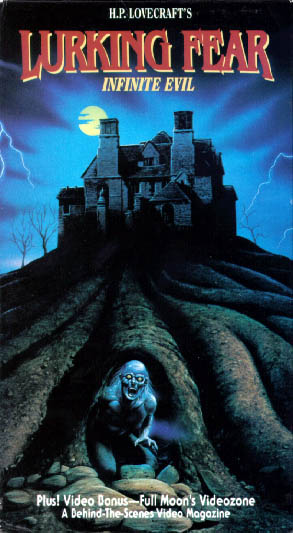
But the prose is that of a writer still given to (“The Lurking Fear” appeared in Home Brew, January-April of 1923) playing too many, and too-strident, notes on his instrument:
Shrieking, slithering torrential shadows of red viscuous madness chasing each other through endless, ensanguined corridors of purple fulgurous sky. . .formless phantasms and kaleidoscopic mutations of a ghoulish, remembered scene; forests of monstrous over-nourished oaks with serpent roots twisting and sucking unnamable juices from an earth verminous with millions of cannibal devils; mound-like tentacles groping from underground nuclei of polypous perversion. . .insane lightning over malignant ivied walls and daemon arcades choked with fungous vegetation. . .
I’m aware that Laura Miller took aim at that selfsame passage when she reviewed The Library of America’s H. P. Lovecraft: Tales for Salon.com in 2005, and maybe we should grant the old gent his crescendo; he works hard to get there. But what concerns us here is Joshi’s “nothing more than an imitation,” and in that context the human backdrop of “the Lurking Fear,” an unreconstructed New Amsterdam family’s resentment of, and resettlement away from, British rule, is pallid and parochial next to the tribal-defying-imperial conflict of “Worms.”

Howard’s Tower of Trajan plays a far more powerful role in his story than does Lovecraft’s Martense mansion in “The Lurking Fear.” A few years ago I had the pleasure of corresponding with Charles Hoffman and Marc A. Cerasini, authors of Robert E. Howard: Starmont Reader’s Guide 35 (the revised edition of which is still apparently being masticated in Wildside’s mouth of madness). They felt that “Worms” has been a different reading experience, or we’ve come to it as different readers, ever since September 11:
The impregnable Tower of Trajan was no more! Bran’s astounded gaze rested on a gigantic pile of ruins — of shattered stone and crumbled granite, from which jutted the jagged and splintered ends of broken beams.
As someone who skedaddled from lower Manhattan that morning like Harry Flashman when a husband comes home early, I agree. Of course it’s not fair to step outside of the story’s original contents and context when taking issue with Joshi, but surely we are permitted to argue that within “Worms” itself, the Tower of Trajan is a signifier of Roman auctoritas and superbia, lordliness looking disdainfully down upon an occupied province.
Let’s rewind to Bran’s fury while still “enjoying” Roman hospitality. “Black gods of R’lyeh, even you would I invoke to the ruin and destruction of those butchers!” is not just a nod to Lovecraft but a tipoff to alert Weird Tales readers: a rage that has gone past incandescent and become incantatory is at work. In a moment the king’s eyes will grow “murky with a thought so fearful” it cannot be voiced to the faithful Grom. The symbolism of the darkening gaze might seem rote, but it literalizes what we come to realize in “Worms,” that few demons can possess a human being so all consumingly and catastrophically as the lust for vengeance.
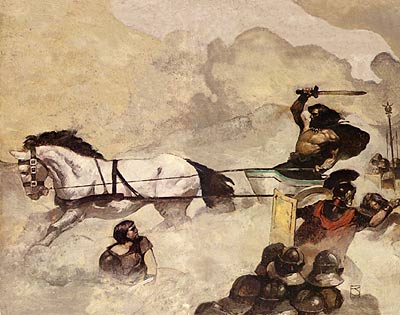
“What have I?” Bran demands. “The heather hills, the wattle huts, the spears of my shock-headed tribesmen! And I fight Rome — with her armored legions, her broad fertile plains and rich seas — her mountains and her rivers and her gleaming cities — her wealth, her steel, her gold, her mastery and her wrath.” All of which are reified, once the story leaves Eboracum, as the Tower of Trajan. Just as Titus Sulla’s name conjures Marius’ murderous rival, the proscription-infamous dictator Lucius Cornelius Sulla, “Trajan” invokes expansionism, the emperor who led the legions eastward in one of the most Alexandrian of Roman campaigns.
So when he arrives at the realization of how the Worms have kept their side of the bargain, Bran is thunderstruck: “Where, he knew, only a few hours before the flags had resounded to the martial tramp of iron-clad feet, and the walls had echoed to the clang of shields and the blast of loud-throated trumpets, a horrific silence reigned. ” The verb reigned is spot-on; the pomp and panoply of the Caesars have been usurped.
Where Lovecraft can only ratchet up the adjectives as the secrets of Tempest Mountain are revealed in “The Lurking Fear,” the tower-rubble of “Worms” is a way-station en route to the horror of culpability Bran experiences as he ministers to the dying legionary, now “almost like a brother.” Now the stage is set for the most extraordinary swordstroke of Howard’s many-bladed career, a merciful quietus dispensed by an assuager rather than an avenger. The Black Stone, Dagon’s Mere, the glittering eyes of the troglodytes with whom he’s dickered, the extinguished lamps in Titus Sulla’s face — all are mirror-surfaces displaying to Bran a self never before suspected and hardly to be respected.
In closing, the Tower of Trajan scene in “Worms” is so much more than an imitation of “The Lurking Fear.” Yes, none of this is particularly cosmic; Howard usually wrote with too much heat to achieve an interstellar chill. Yes, the interest in people isn’t very Lovecraftian, even if that interest focuses on people willing to abjure everything that makes them people. Should not the tragic be as welcome as the cosmic in weird fiction? Authentic and artistic examples of both will always be rare.
Having responded as a Howardist where needful, in Part Two I’ll move on to a more Mythos-wide frame of reference in reacting to S. T. Joshi’s almost compulsively discussable book.
Part Two: Cry ‘Havoc!’ and Let Slip the Hounds of Tindalos
Part Three: Autochthonic Masses Howling and Wet-Mouthed
